Whether you’re a farmer on the outskirts of Omaha hauling livestock, a construction crew heading to a job site around the metro, or a family escaping for a weekend at a Nebraska state park, understanding the language of towing is crucial for safety and efficiency.
Navigating the world of hitches, weight ratings, and capacities can seem daunting, but this guide will break down the essential terminology to ensure you’re towing with confidence.
Table of Contents
What are GVWR, GCWR, and Towing Capacity?
Before you hitch up any trailer, it’s vital to understand the weight limitations of your vehicle. These ratings are determined by the manufacturer to ensure safe operation and prevent damage.
Remember to check your vehicle owner’s manual for the details specific to your vehicle.
GVWR (Gross Vehicle Weight Rating)
The GVWR is the maximum safe weight of your vehicle on its own, including passengers, fuel, and all the cargo in the cab and bed. This rating is usually found on a sticker inside the driver’s side door jamb.
Trailers also have their own GVWR, which indicates the maximum weight the trailer can safely be. This is typically found on a sticker near the front of the trailer or, for an RV, sometimes inside a cabinet door.
GCWR (Gross Combined Weight Rating)
This is the absolute maximum weight of your tow vehicle and the attached trailer combined, including all passengers, cargo, and fluids. Think of it as the total weight your vehicle can safely handle as a complete unit.
For a farmer near Omaha pulling a heavy livestock trailer with a dually truck, knowing the GCWR is critical to ensure they are not overstressing the truck’s engine, transmission, and brakes.
You can typically find the GCWR and specific tow ratings in your vehicle’s owner’s manual. It’s important to note that these ratings can vary based on factors like engine size, axle ratio, and wheelbase.
Payload Capacity
Payload refers to the total weight your vehicle can carry in its cab and bed. This figure is crucial for anyone hauling heavy items, from a construction worker in Omaha loading their truck with tools and materials to a family packing up for a camping trip.
You can find your vehicle’s specific payload capacity on a yellow and white tire and loading information sticker, also located in the driver’s side door jamb.
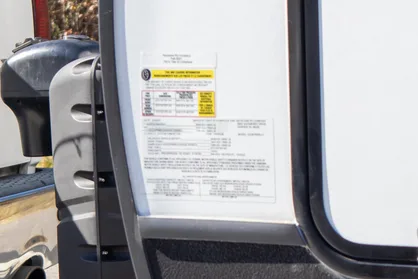
This number is specific to your vehicle as it left the factory and accounts for its specific options. You can also calculate it by subtracting the vehicle’s curb weight (its weight when empty) from the GVWR.
Remember, the tongue weight of your trailer also counts against your payload capacity.
GAWR (Gross Axle Weight Rating)
The GAWR is the maximum weight that can be placed on each individual axle. Vehicles have a separate rating for the front and rear axles. It’s possible to overload one axle before you reach your vehicle’s total payload or GVWR, especially with unevenly distributed loads.
For example, a landscaper in carrying a heavy load of pavers in the back of their truck must be mindful of the rear GAWR to prevent axle damage and ensure safe handling.
Towing Capacity
In simple terms, towing capacity is the maximum weight your vehicle can pull. A basic formula to understand this is: GCWR – GVWR = Towing Capacity.
This shows how much trailer weight the vehicle is rated to handle in addition to its own maximum weight.
Tongue Weight
Also known as pin weight or hitch weight, this is the downward force that the trailer’s tongue exerts on the hitch of the tow vehicle.
Proper tongue weight is critical for stability; too little can cause dangerous trailer sway, while too much can negatively impact the tow vehicle’s steering and braking.
A good way to estimate the tongue weight is to calculate 10-15% of the total loaded trailer weight.
What Is My Hitch Rating and Hitch Class?
The hitch is the critical connection point between vehicle and trailer, and its rating determines if it can safely support the tongue weight of your trailer.
The overall hitch rating is limited by the component with the lowest capacity—be it the receiver, the hitch itself, or the ball.
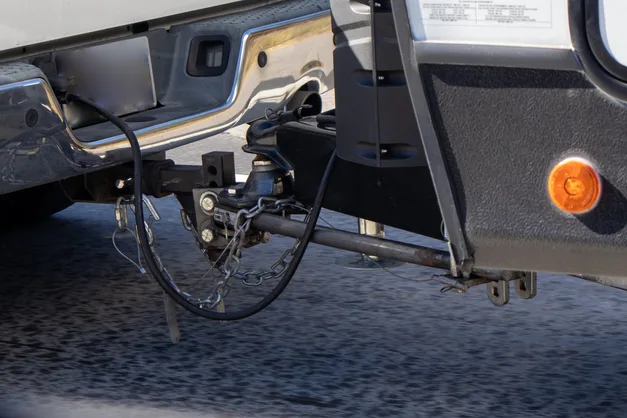
Class I & II: These are for lighter loads. A Class I hitch can pull up to 2,000 lbs. with a 200 lb. tongue weight, commonly seen on small cars or vans. A Class II can handle up to 3,500 lbs. with a 350 lb. tongue weight, suitable for full-size cars or small SUVs. A family in Omaha might use a Class II hitch to tow a small trailer of kayaks to a local lake.
Class III: These are very common on full-size SUVs and trucks, rated for up to 5,000 lbs. (and sometimes more) with a tongue weight of up to 800 lbs.
Class IV: For heavier loads, these are found on full-size trucks and vans. They can pull 10,000-12,000 lbs. with a tongue weight of 1,000-1,200 lbs. and often require a weight distribution system.
Class V: These are for the biggest jobs, typically found on heavy-duty trucks pulling large trailers. They can handle 16,000-20,000 lbs. with tongue weights to match.
The 3 Main Hitch Types: Receiver, Gooseneck, and 5th Wheel
The type of hitch you use depends on your vehicle and the trailer you’re towing.
Receiver Hitch: This is the most common type, where a receiver is mounted to the vehicle’s frame, usually below the bumper. A removable ball mount slides into the receiver, to which a hitch ball of a specific size is attached. The trailer’s coupler then locks onto the ball.
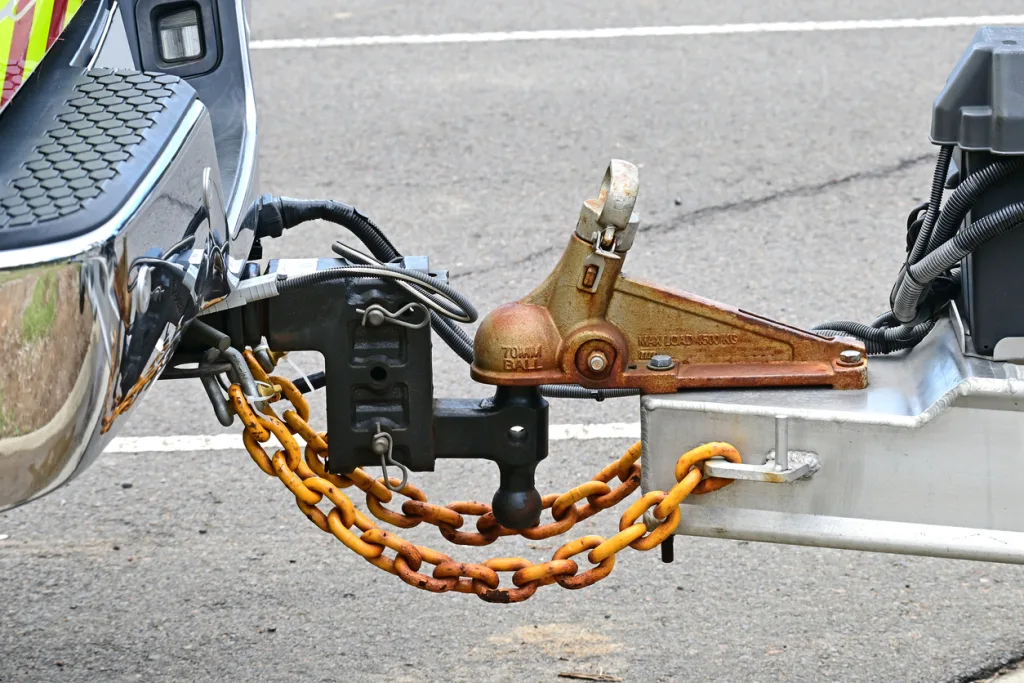
Gooseneck Hitch: This system involves a ball mounted in the bed of a truck that connects to a coupler on the trailer. Gooseneck hitches offer excellent maneuverability and are often preferred for agricultural use, making them a common sight on farms in Nebraska and Iowa for hauling livestock, hay bales, or equipment. While they are typically rated as Class V, they can sometimes be noisier and less stable than a 5th wheel hitch.
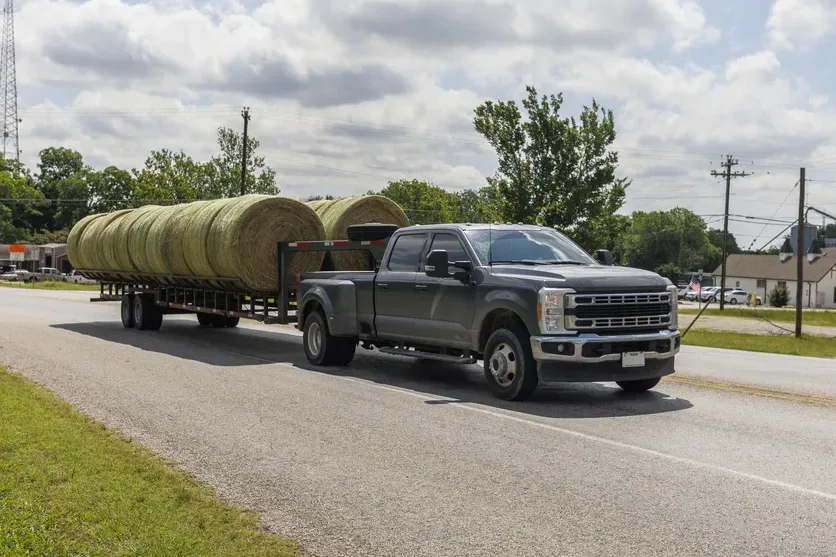
5th Wheel Hitch: A large, heavy-duty hitch that also mounts in the bed of a truck. It uses a jaw-and-kingpin connection, similar to a semi-truck, providing excellent stability and a smooth ride, which is why they are favored by RV enthusiasts towing large travel trailers from Omaha to destinations across the country. Some models offer features that allow for sharper turns, a key consideration for trucks with shorter beds. These hitches are not rated in classes but come in various weight capacities starting from 16,000 lbs.
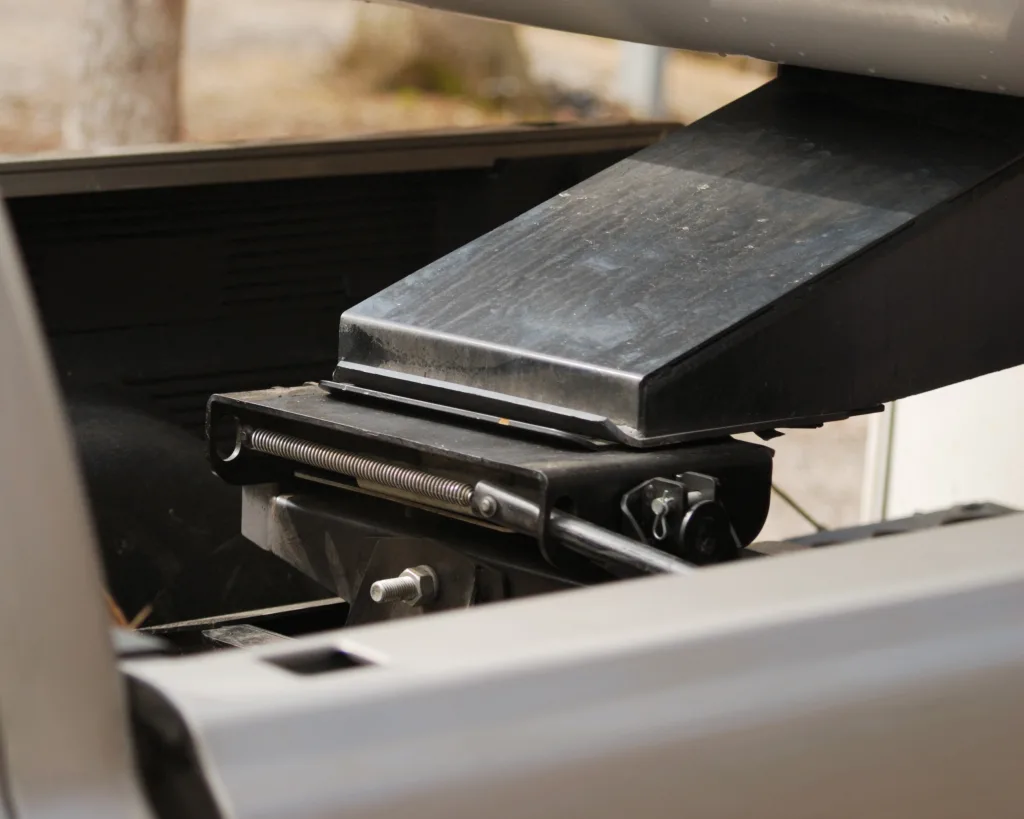
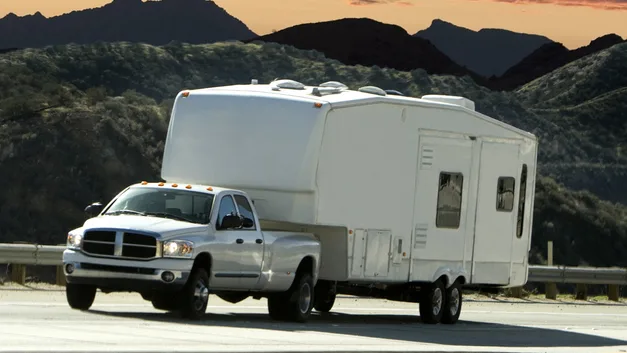
From the rolling fields surrounding Omaha to the heart of the city’s bustling job sites, a clear understanding of towing terminology is the key to a safe and successful journey.
Knowing the difference between GCWR and GVWR, calculating your true payload, and selecting the right hitch for the job are not just technical details, they are fundamental safety practices.
By respecting these weight ratings and using the correct equipment, you protect not only your own vehicle and cargo but also everyone else who shares the road. So, before you head out, double-check those stickers, consult your owner’s manual, and tow with the confidence that comes from being well-informed.







